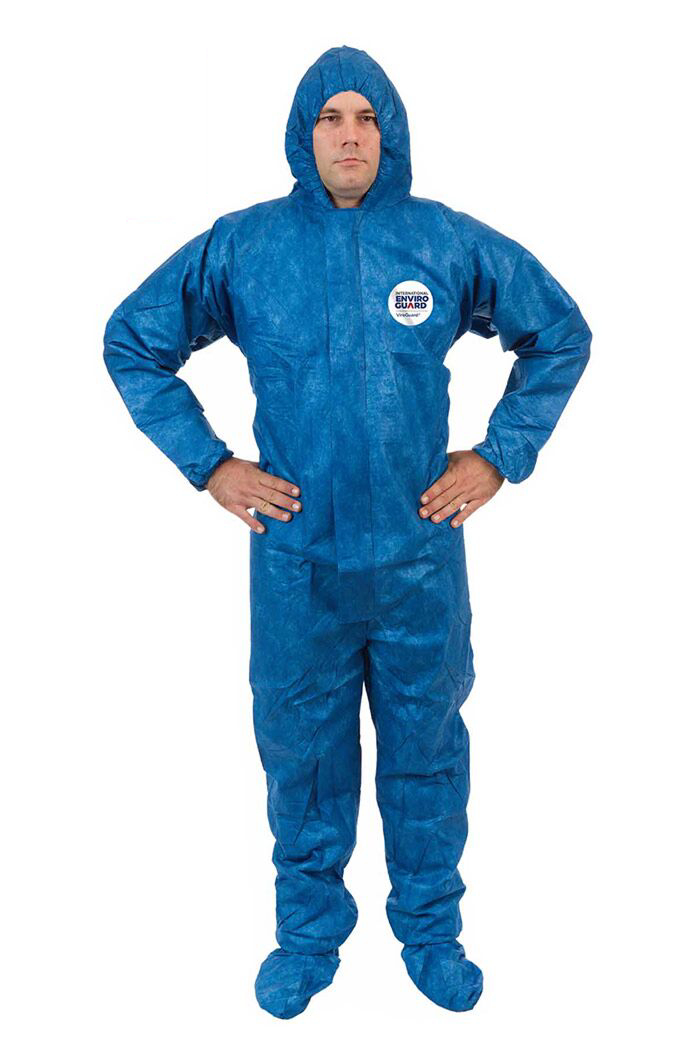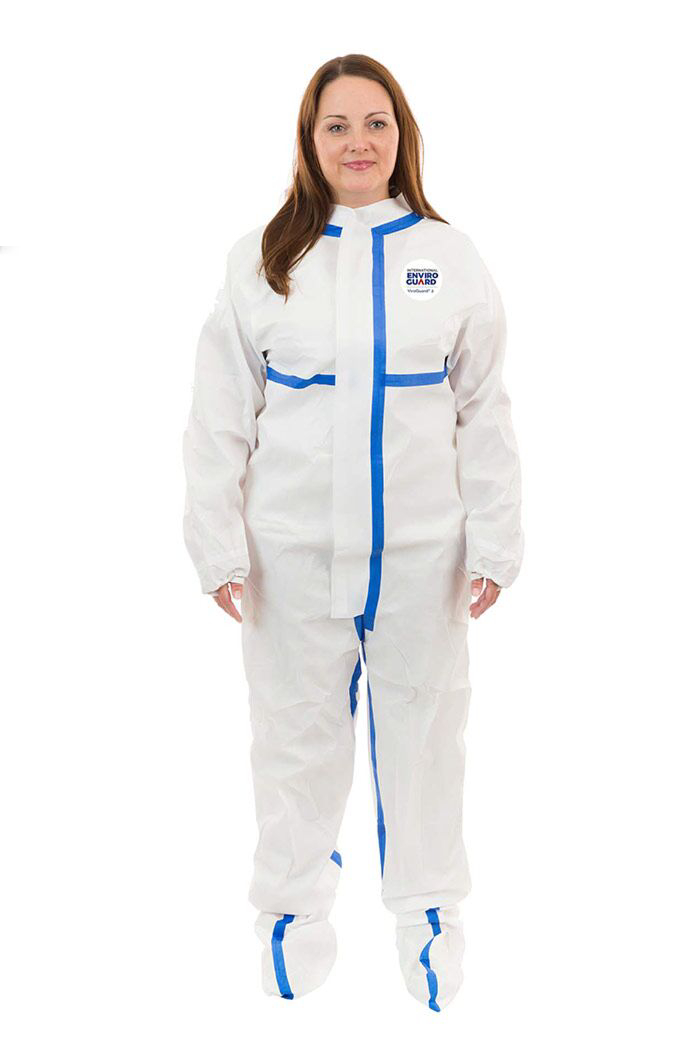We use cookies to make your experience better. To comply with the new e-Privacy directive, we need to ask for your consent to set the cookies. Learn more.
PROTECTIVE CLOTHING FOR CRIME SCENE CLEANUP
Scenarios such as a violent crime, suicide, a trauma scene, or an unattended death require a lot of time and attention. There are numerous crime scene investigators, crime scene cleanup services personnel, and law enforcement that come into close contact with victims before biohazard removal begins and after. Because of the furor that surrounds the crime and its investigation, the crime scene must be protected from cross-contamination.
This is where proper crime scene PPE is critical for protecting workers who come into contact with the biological material present, and for protecting the scene from contamination resulting from on-scene workers. Contaminants like hair, skin cells, and/or clothing fibers from workers can compromise the investigation.
Protection from Infectious Diseases
Crime scenes are a major source of infections due to the blood, bodily fluids, and human remains on site. When people pass away, whatever infections they had may be present in their remains. As a result, crime and trauma scenes are often full of biohazards including diseases like HIV, Hepatitis, Cholera, and Tuberculosis.
It’s important that biohazard remediation technicians—those who clean the scene, sterilize it, and make it habitable for the next occupants—are adequately protected for biohazard cleanup. Crime scene protective clothing such as full-body suits or forensic coveralls are the first line of defense against these biological hazards.
Crime scene cleaners collect the residual remains in a biohazard container and dispose of them according to the Occupational Safety and Health Administration (OSHA) regulations. These remains may carry diseases and infections, putting cleanup crews and forensic restoration specialists at considerable risk.
Therefore, crime and trauma scene cleaners must wear disposable protective apparel and other PPE to ensure they are safe from blood, viruses, diseases, and blood penetration. Disposable forensic suits help prevent any contaminants from spreading beyond the crime scene to personal vehicles, the office, the home, etc.
Protection from Blood
Most of the infections and diseases at crime scenes are found in the blood. Furthermore, at crime scenes, blood is the most prevalent contaminant that needs to be cleaned up. It can be found almost anywhere; pools of it may have congealed on the floor, carpeting, in mattresses, in sofas, in cracks in the wall, on the ceiling or walls, and so on.
Crime scene cleaners must consider blood as a primary carrier of infection; cleaners must never remove their PPE (gloves), either to scrub an item harder or to make it easier to grab. Keeping both pairs of gloves on is important because it not only helps prevent skin contact with bodily fluids, but also protects against sharp objects that may be present at the scene such as glass shards, metal fragments, needles, and so on. These sharp materials can puncture outer gloves, which is why wearing two pairs is critical for the safety of crime scene cleanup services.
Protection from Odors
Crime scenes typically have a terrible smell. As a result, crime scene cleaners need protection from pungent odors onsite. Thankfully, there is PPE (masks, respirators) that filter out odors and toxins, the most effective being particle filtration gas masks.
Crime Scene Remediation Protective Clothing
- Adequate protection starts with full-body, disposable protective apparel: this starts from the head—covering both ears—and extends to the wrists and ankles.
- Next are booties, also known as protective shoe covers or overshoes. These are worn over top of shoes to keep them free of contaminants at the scene and to prevent any debris from the shoe from contaminating the crime scene.
- Next, rubber or latex gloves should be taped at the wrist and are to be followed by a larger pair of rubber gloves to ensure enhanced protection. Wearing two pairs of rubber gloves is safer than latex gloves.
- A face mask and often a respirator for airborne respiratory hazards and odor control; this covers the eyes, nose, and mouth, with filters to keep the air clean and odor-free. This also helps protect the wearer from inhaling or absorbing toxic chemicals and contaminants through their mucous membranes.
- Depending on the situation, eye protection may be needed. The eyes are another mucous membrane that can absorb hazardous materials like chemical spray. Goggles, full face shields, safety glasses, or specially designed “forensic glasses” may be needed for specific tasks.
Forensic restoration PPE is vitally important for preventing the spread of disease throughout the cleanup process. Protective coveralls often include features such as long sleeves with elastic wrists, elastic ankles, or an attached hood and boots.
Elastic wrists and/or ankles keep sleeves and pant legs in place to prevent them from riding up and possibly exposing the skin to body fluids or harsh chemicals. These features work together to cover more of the body and to prevent skin exposure.
Selecting the Right Forensic Restoration PPE
ViroGuard® Forensic Suits for Biological Contaminants
Law enforcement and forensic remediation teams that need disposable protective garments should consider the ViroGuard® product line from International Enviroguard. This coverall fabric and full product line is engineered for protection against human remains, blood, bodily fluids, and blood-borne pathogens. It also offers protection against liquid splashes, dry particulate hazards, chemicals, and some acids.
The design, fit, and comfort of a protective garment are critical for this line of work. These workers spend a lot of time kneeling and bending down, so the design and fit must accommodate a full range of motion to prevent rip-outs or tears. All garments are designed to meet the ANSI/ISEA 101-2016 standard for a reliable fit that doesn't compromise movement. Additional comfort and convenience features include a reinforced crotch area, seamless shoulder areas, elastic in the back, a front zipper with a storm flap, and more.
ViroGuard® was designed in accordance with the personal protective equipment (PPE) guidelines established by the Centers for Disease Control and Prevention (CDC). The fabric used in making the garments passes the standards set by ASTM International (one of the foremost standards organizations in the world) for blood and bloodborne pathogens.

